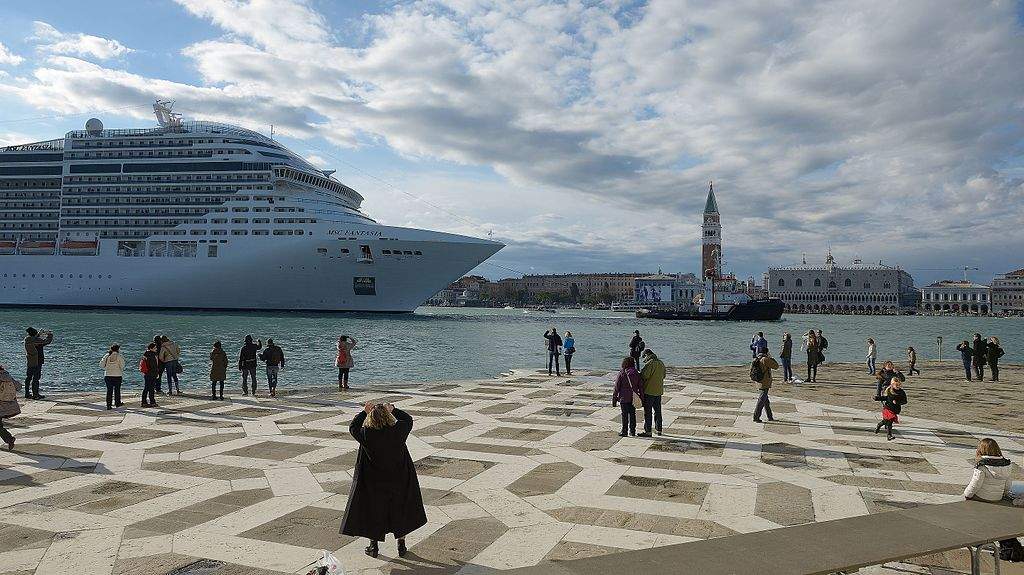This timeUnesco is serious: the United Nations’ top organization for culture has in fact put Italy in front of an aut aut aut, imposing a stop to large ships once and for all. So a stop that is serious and effective, and not theoretical like the one that was imposed by the Draghi government, which has enshrined it in law but is not yet in force because a berthing point for the ships has not yet been found, for the reasons we have outlined on these pages. Otherwise, the real risk is that Venice will end up on the World Heritage in Danger list, a sort of black list of threatened sites, which could also be the possible prelude to its removal from the Unesco list.
Unesco’s opinion on Venice is contained in the report State of conservation of properties inscribed on the World Heritage List: the case will be further discussed at the 44th session of the World Heritage Committee, which will meet in Fuzhou, China from July 16-31, 2021. At the meeting, a decision will be made on whether to place Venice on the list of threatened sites. “Although there is by law a ban on entry into the Venice lagoon for ships above 40,000 tons,” the report says, “this has no practical effect, because there are no alternatives for the docking of large ships.” The paper reminds that Italy should “continue to seek a long-term solution as a matter of great urgency, prioritizing a ban on the entry of large ships into the lagoon and preferably diverting them to more suitable ports in the region.”
But it doesn’t end there, there are also other factors that threatenOutstanding Universal Value (“OUV,” or the outstanding universal value that warrants a site’s World Heritage listing): theovertourism that, although waned during the Covid-19 pandemic, “underscored the need for more sustainable tourism management and the development of a different economic base for the future of the site and its inhabitants”; the depopulation of Venice and the other historic centers of the lagoon; industrial activities on the lagoon, which should be “managed according to a more sustainable approach,” and also “all activities that have a detrimental effect on the site’s ecosystem should be eliminated in the long term”; and then again urban development on the mainland, with several impactful interventions, some of which are listed in the report.
“Although progress has been made on many issues reported by the Committee,” the report finally states, “some key issues remain unresolved. These continue to launch significant cumulative threats to the site’s OUV and include, specifically, the complex impacts of mass tourism, continued population decline, and basic gaps in site governance and management that have led to a significant loss of historic authenticity in Venice and other historic centers in the lagoon. All of this results in detrimental effects to the intrinsic characteristics of the site and potentially endangers its OUV and the elements that support the OUV. [...] Resolution of these long-standing problems is hampered by lack of vision and inefficiency in integrated management on all levels. These factors warrant the site’s inclusion on the World Heritage in Danger List.”
At present, only three sites in Europe are on the World Heritage in Danger list: the historic center of Vienna (due to impactful urban development), the medieval monuments of Kosovo (due to lack of protective legislation, insecurity and instability), and the maritime city of Liverpool (due to projects affecting the historic part of the harbor that could change its face). The listing of Venice would be an embarrassment for Italy. And there are already cases of sites that have been removed from the World Heritage List: the example of the Elbe Valley in Germany, which was included in 2004 and deleted in 2009 because of the construction of a bridge that was deemed excessively impactful on the integrity of the landscape, may be worth mentioning.
Culture Minister Dario Franceschini, for the moment, cashes in: “Unfortunately, theUnesco decision,” he said, “has been in the air for some time. It is the announcement of a possible decision by the World Committee in mid-July regarding the inclusion of Venice on the endangered heritage list. That would be a very serious thing for our country. I think there is no more time to hesitate. We have already taken an important step with the last decree-law on the final destination of the landing of large ships outside the lagoon. Now I believe that something more must be done, such as immediately preventing the passage of large ships in the Giudecca Canal.”
Photo: cruise ship in St. Mark’s basin. Photo by Wolfgang Moroder
 |
| Unesco, ultimatum to Italy: no more (seriously) big ships, or Venice goes on black list |
Warning: the translation into English of the original Italian article was created using automatic tools. We undertake to review all articles, but we do not guarantee the total absence of inaccuracies in the translation due to the program. You can find the original by clicking on the ITA button. If you find any mistake,please contact us.